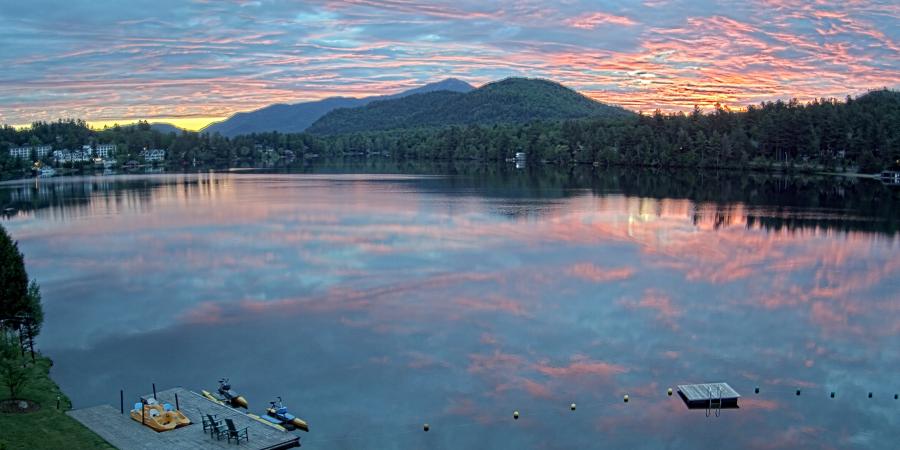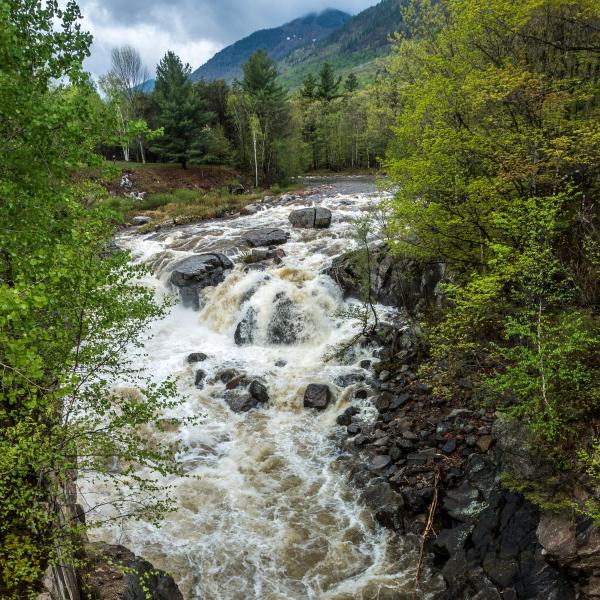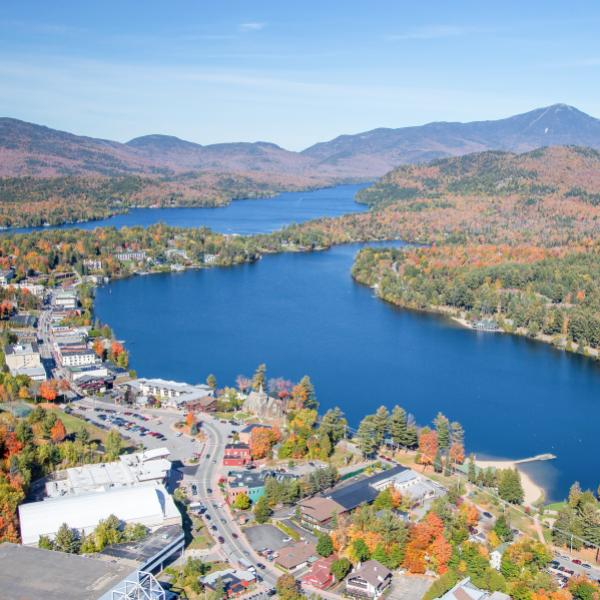Pedestrians along popular lakeside routes in the Village of Lake Placid will find four new interpretive signs describing the Mirror Lake ecosystem, challenges to it, and protection efforts underway. The Ausable River Association (AsRA), Rensselaer Polytechnic Institute (RPI), and Paul Smith's College Adirondack Watershed Institute (AWI) partnered to design and produce the four educational signs.
The colorful and accessible signs provide information on the aquatic food web, the watershed, road salt impacts, and monitoring efforts on Mirror Lake. Jon Stetler of RPI developed the idea for the signs working with AsRA's staff. They were designed by Andrea Guilbo and produced with funds from the National Science Foundation through RPI and from the Lake Champlain Basin Program (LCBP) and NEIWPCC through AsRA. The four signs were installed by the Village of Lake Placid Highway Department in early October. Each of the signs stand on their own but, together, they tell the story of Mirror Lake's ecology and efforts to restore its water quality through scientific monitoring and community action. Here's an overview of each sign:
Support our water quality work for clean water. Give with confidence today!
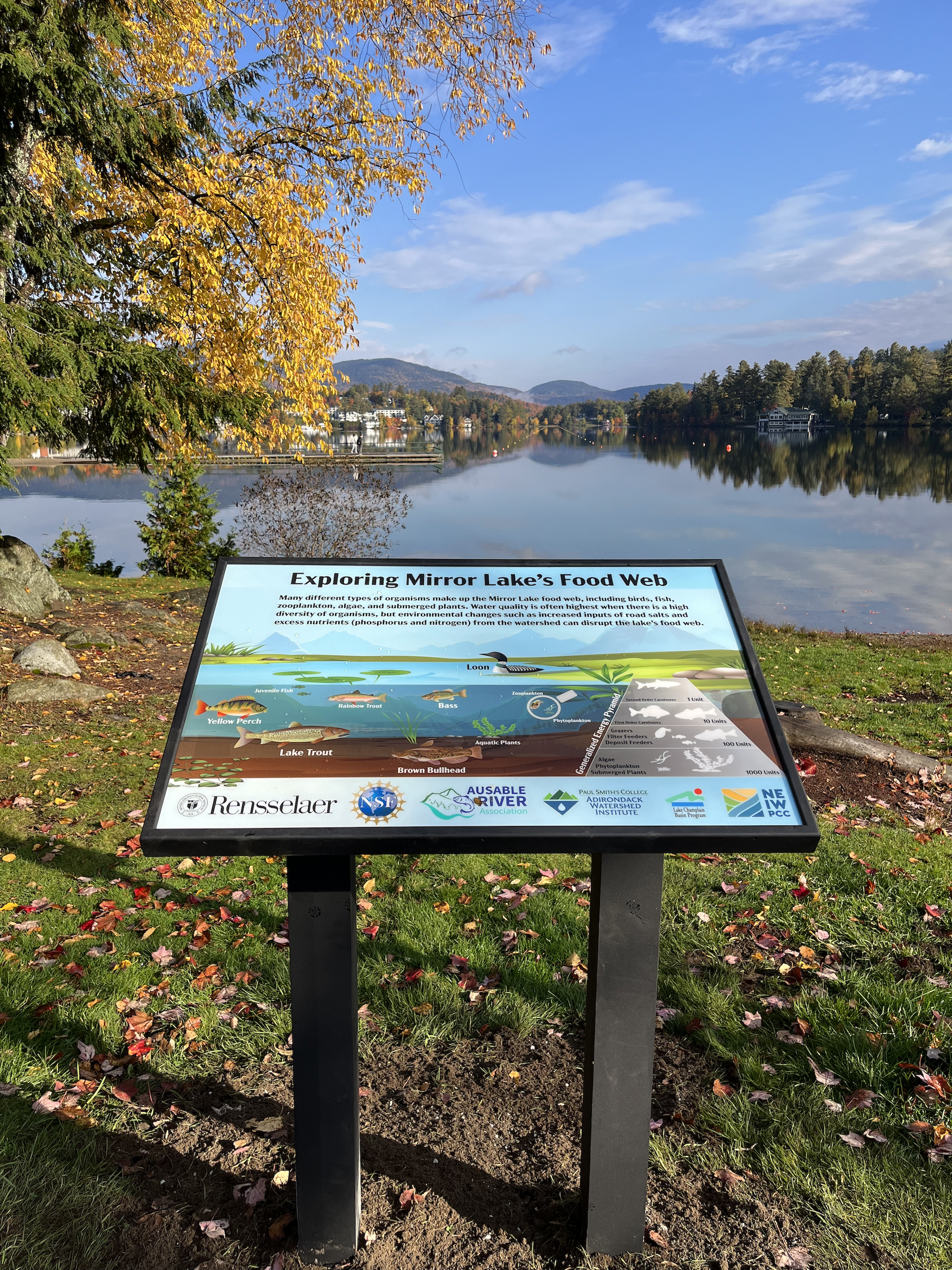
Visitors can learn about Mirror Lake’s food web near the public beach.
Exploring Mirror Lake’s Food Web - A generalized food web is shown on the sign that represents the ecosystem in Mirror Lake. The first trophic level consists of primary producers such as aquatic plants, algae, and phytoplankton. These bring carbon into the food chain by fixating energy from the sun and releasing oxygen into the water and atmosphere. The second trophic level include the grazers, filter feeders, and deposit feeders. They include juvenile fish, and brown bullhead. The third trophic level are the first level carnivores such as bass, rainbow trout, and yellow perch. These fish hunt and eat the herbivores. The fourth trophic level are the second level carnivores - in this case lake trout and loons. These species hunt and eat both first level carnivores and herbivores. They are swift, voracious hunters since they must capture a lot of prey to gain the energy they require. The species in each level depend on the others and what harms one, harms the others.
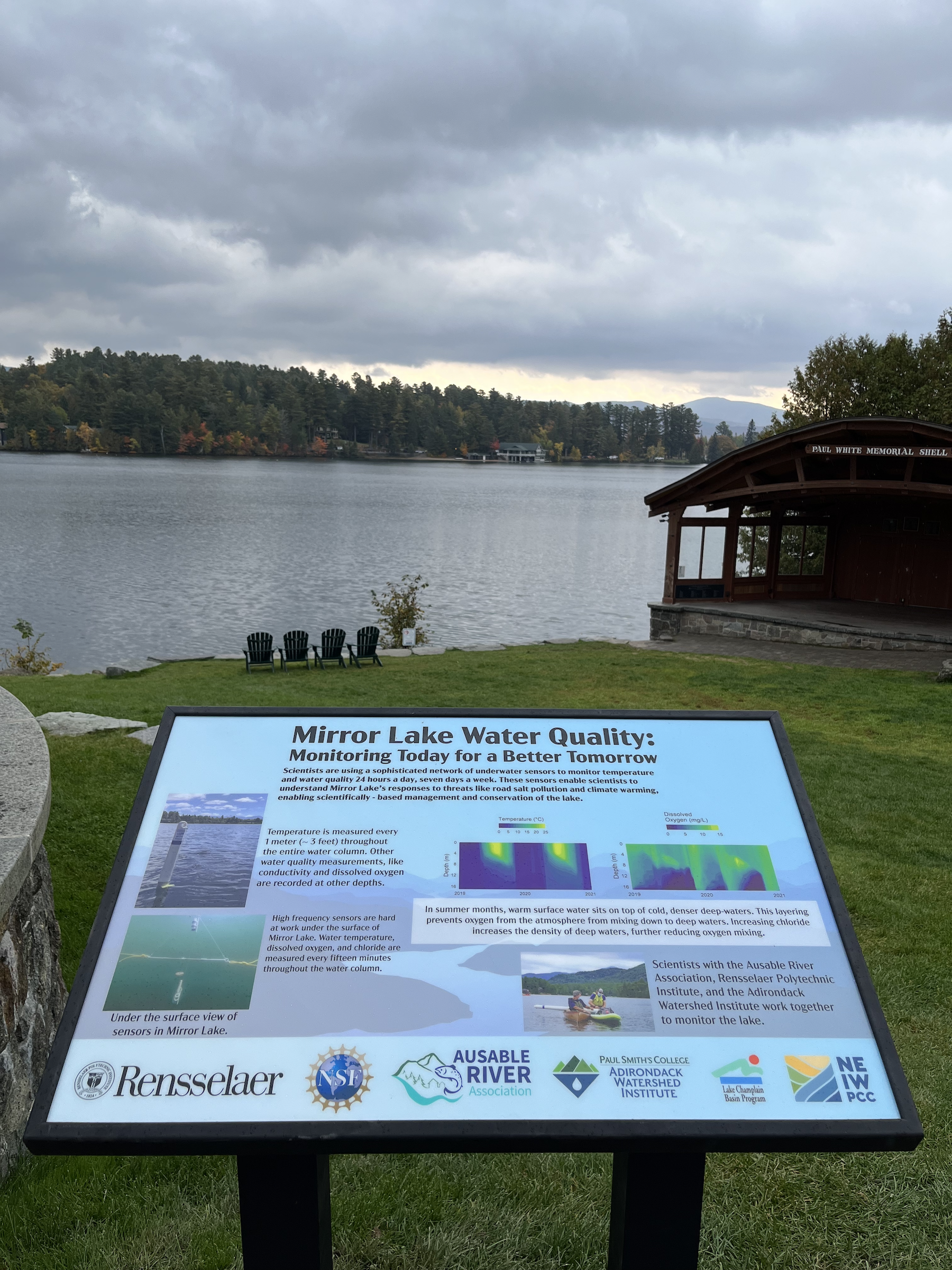
At Mid’s Park you can learn about Mirror Lake’s water quality and view the buoy.
Mirror Lake Water Quality: Monitoring Today for a Better Tomorrow – Members of AsRA, RPI and AWI work together to monitor the lake year-round though a sophisticated monitoring network attached to a buoy near the center of the lake. The buoy can be seen clearly from the sign at Mid’s Park. Sampling the lake year-round - by canoe in summer and on foot in the winter through a hole cut the ice - allows us to have a complete view of the water quality of the lake, including detailed measurements during, before, and after lake turnover. Mirror Lake has been monitored by AsRA since 2015 and is at the focus of grant work funded by LCBP and NEIWPCC.
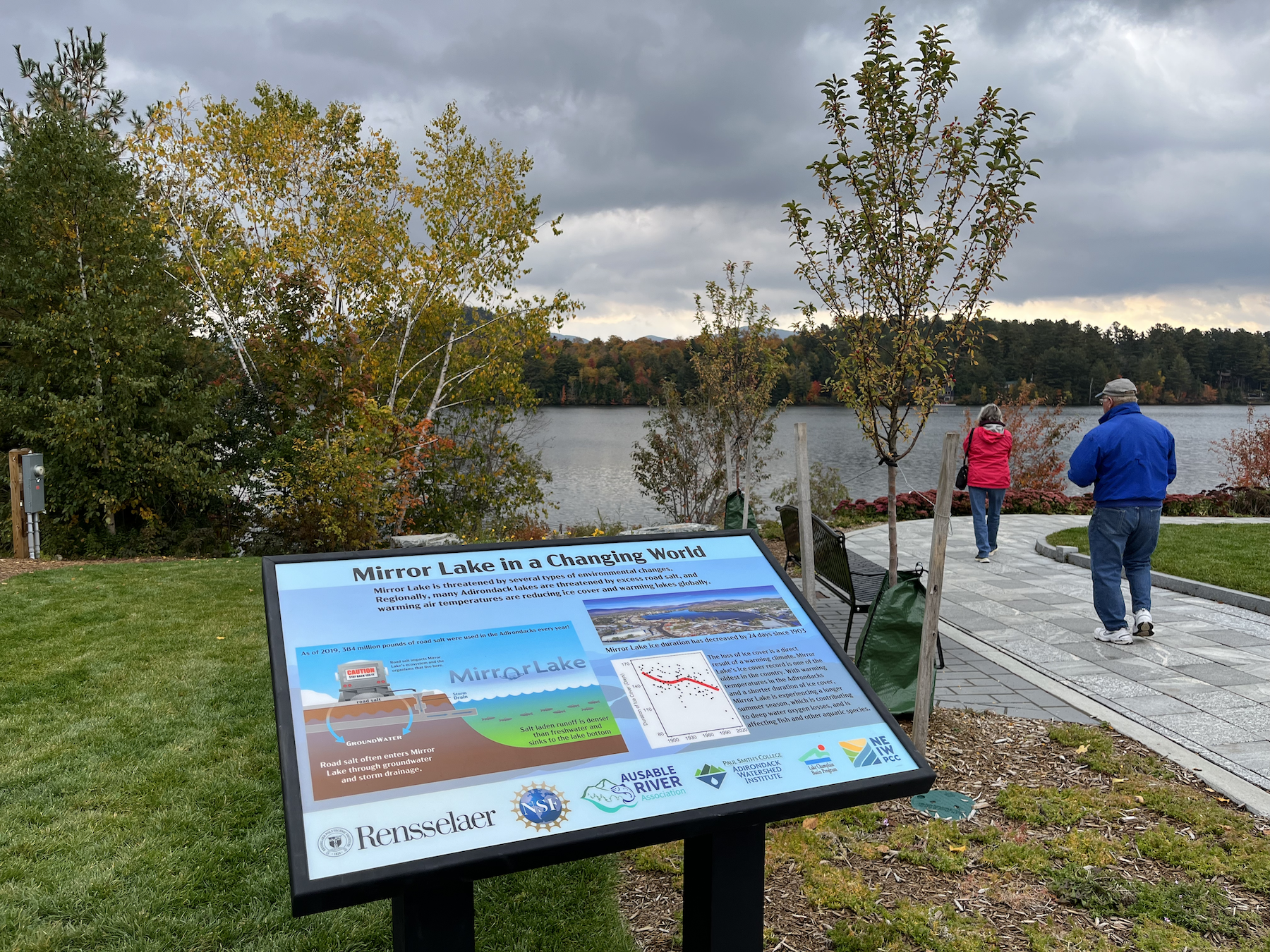
Information on road salt and ice cover changes can be found on the sign at the Brewster parkette at the base of Sara-Placid Road.
Mirror Lake in a Changing World – Mirror Lake is threatened by several types of environmental changes. Many Adirondack lakes are threatened by excessive road salt usage. Road salt creates more dense water that sinks to the lake bottom of a lake. In Mirror Lake, this dense water has interrupted natural spring turnover in 4 of the past 6 years. AsRA has been working successfully with the Village of Lake Placid, the Town of North Elba, and the community through the Salt Use Reduction Initiative to reduce road salt usage. Adirondack lakes are also threatened by warming air temperatures. Warming air temperatures have reduced ice coverage and increased lake temperatures. The duration of ice cover on Mirror Lake has decreased by 24 days since 1903 - a notable decline with consequences for aquatic life, water quality, and recreation.
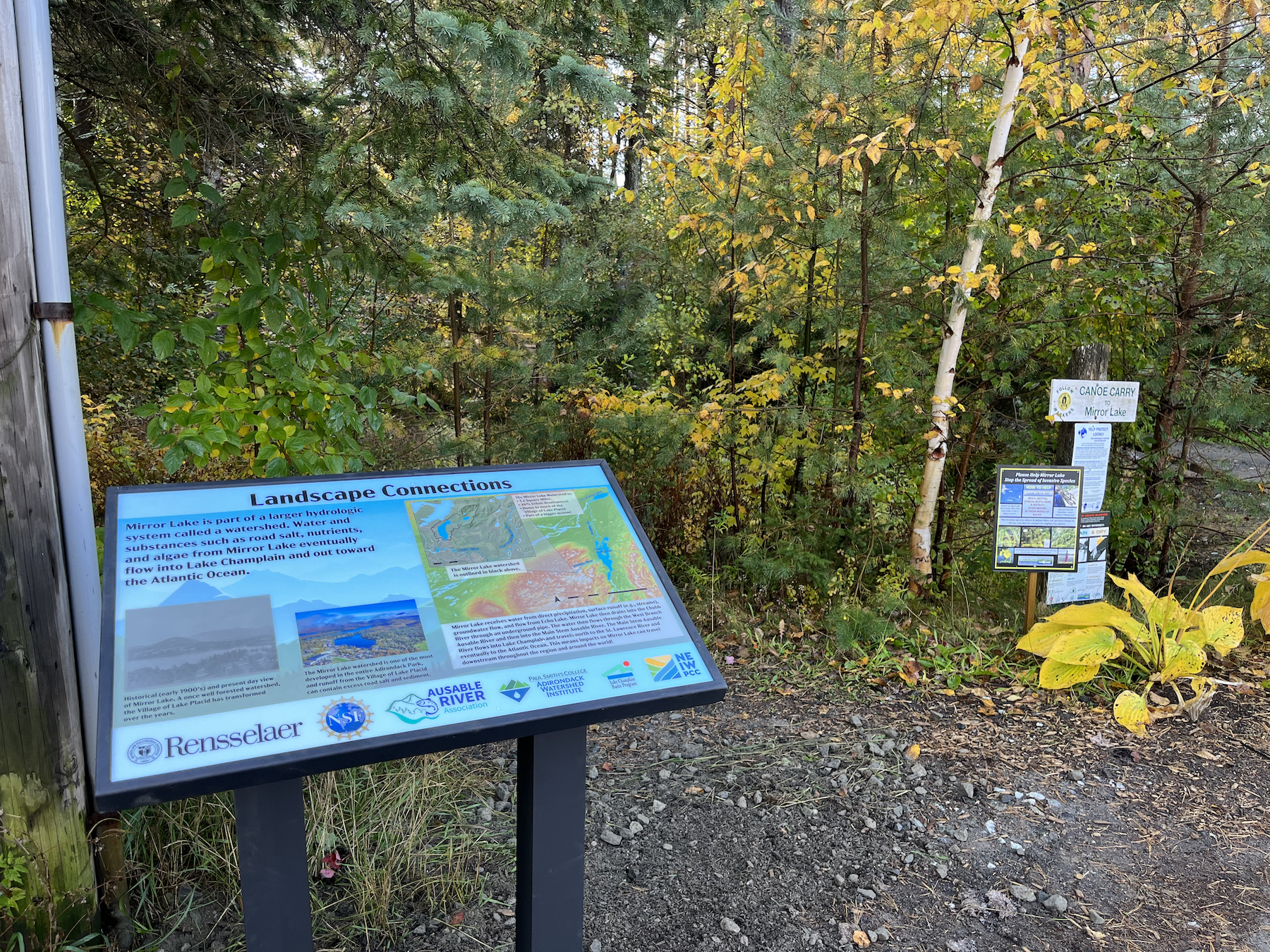
Watershed and information on connections to the landscape is on the sign at the boat launch easement.
Landscape Connections – Mirror Lake is one of the most developed lakes in the Adirondack Park and one of the most studied. The Mirror Lake watershed is 1.2 square miles and encompasses the Village of Lake Placid, Echo Lake, public and private lands. Watershed and shoreline development have direct impacts on lake water quality. Water, substances, nutrients, and pollutants move at varying rates into and through Mirror Lake into the West Branch Ausable River to Lake Champlain and then toward the Atlantic Ocean.
The Mirror Lake signs will remain in place for the duration of the Salt Use Reduction Initiative efforts currently funded through mid 2025.
Story by Leanna Thalmann, Water Quality Associate.
Sign-up for our e-newsletter to get weekly updates on the latest stories from the Ausable River Association.
